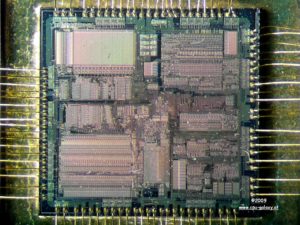Unlock TMS320F28020PTS DSP Controller Source Code
Unlock TMS320F28020PTS DSP Controller Source Code’s Characteristics of the compare/ PWMs are as follow:
16-bit, 50-ns resolutions
Programmable deadband for the PWM output pairs, from 0 to 102 s
Minimum deadband width of 50 ns
Change of the PWM carrier frequency for PWM frequency wobbling as needed
Change of the PWM pulse widths within and after each PWM period as needed
External maskable power and drive-protection interrupts
Pulse-pattern-generator circuit, for programmable generation of asymmetric, symmetric, and four-space vector PWM waveforms for the purpose of Copy TMS320F28043 MCU Flash Program
Minimized CPU overhead using auto-reload of the compare and period registers
The capture unit provides a logging function for different events or transitions. The values of the GP timer 2 counter and/or GP timer 3 counter are captured and stored in the two-level first-in first-out (FIFO) stacks when selected transitions are detected on capture input pins, CAPx for x = 1, 2, 3, or 4. The capture unit of the TMS320x240 consists of four capture circuits in order to Clone TMS320F28062 DSP Controller Eeprom Software.
The capture unit of Unlock TMS320F28020PTS DSP Controller Source Code includes the following features:
– One 16-bit capture-control register, CAPCON, for reads or writes
– One 16-bit capture-FIFO status register, CAPFIFO, with eight MSBs for read-only operations, and eight LSBs for write-only operations
– Optional selection of GP timer 2 and/or GP timer 3 through two 16-bit multiplexers (MUXs) to facilitate the process of Crack TI Microcontroller TMS320F28032 Memory. One MUX selects a GP timer for capture circuits 3 and 4, and the other MUX selects a GP timer for capture circuits 1 and 2.
– Four 16 bit x 2 FIFO stack registers, one two-level FIFO stack register per capture circuit. The top register of each stack is a read-only register, FIFOx, where x = 1, 2, 3, or 4.
– Four possible Schmitt-triggered capture-input pins (CAPx, x = 1 to 4) with one input pin per capture unit
– The input pins CAP1 and CAP2 also can be used as inputs to the QEP circuit.
– User-specified edge-detection mode at the input pins to Extract IC
– Four maskable interrupts/flags, CAPINTx, where x = 1, 2, 3, or 4


